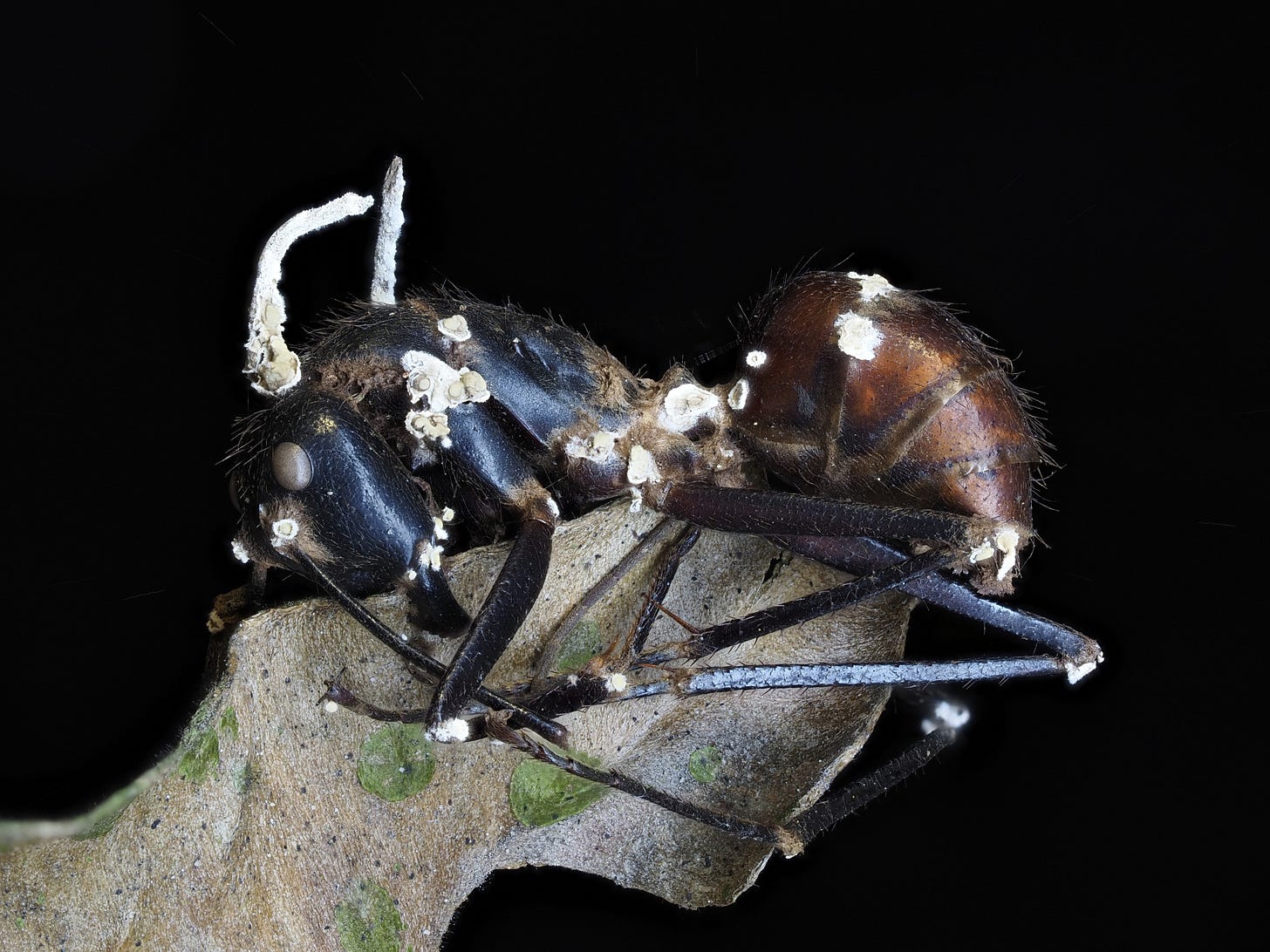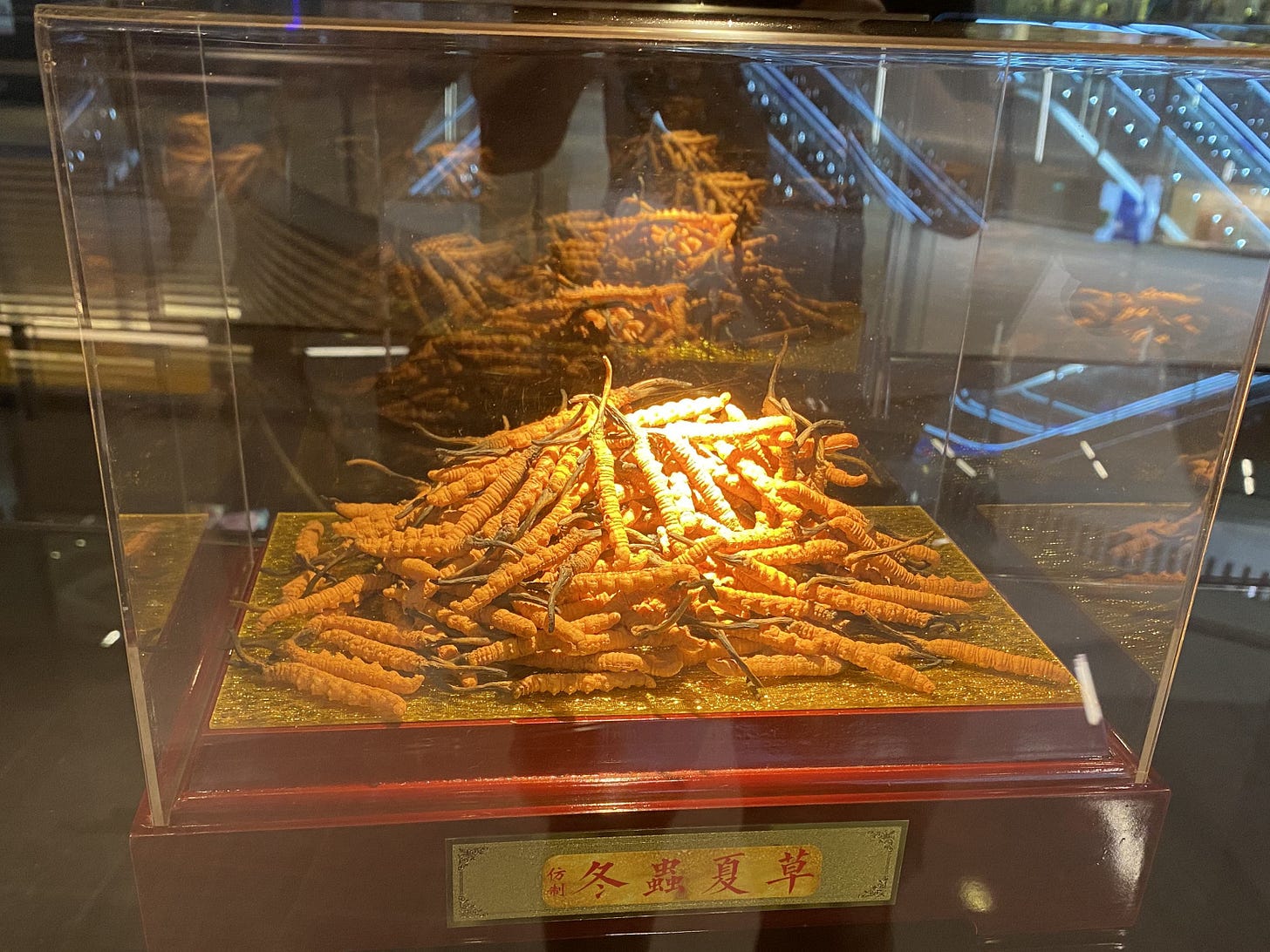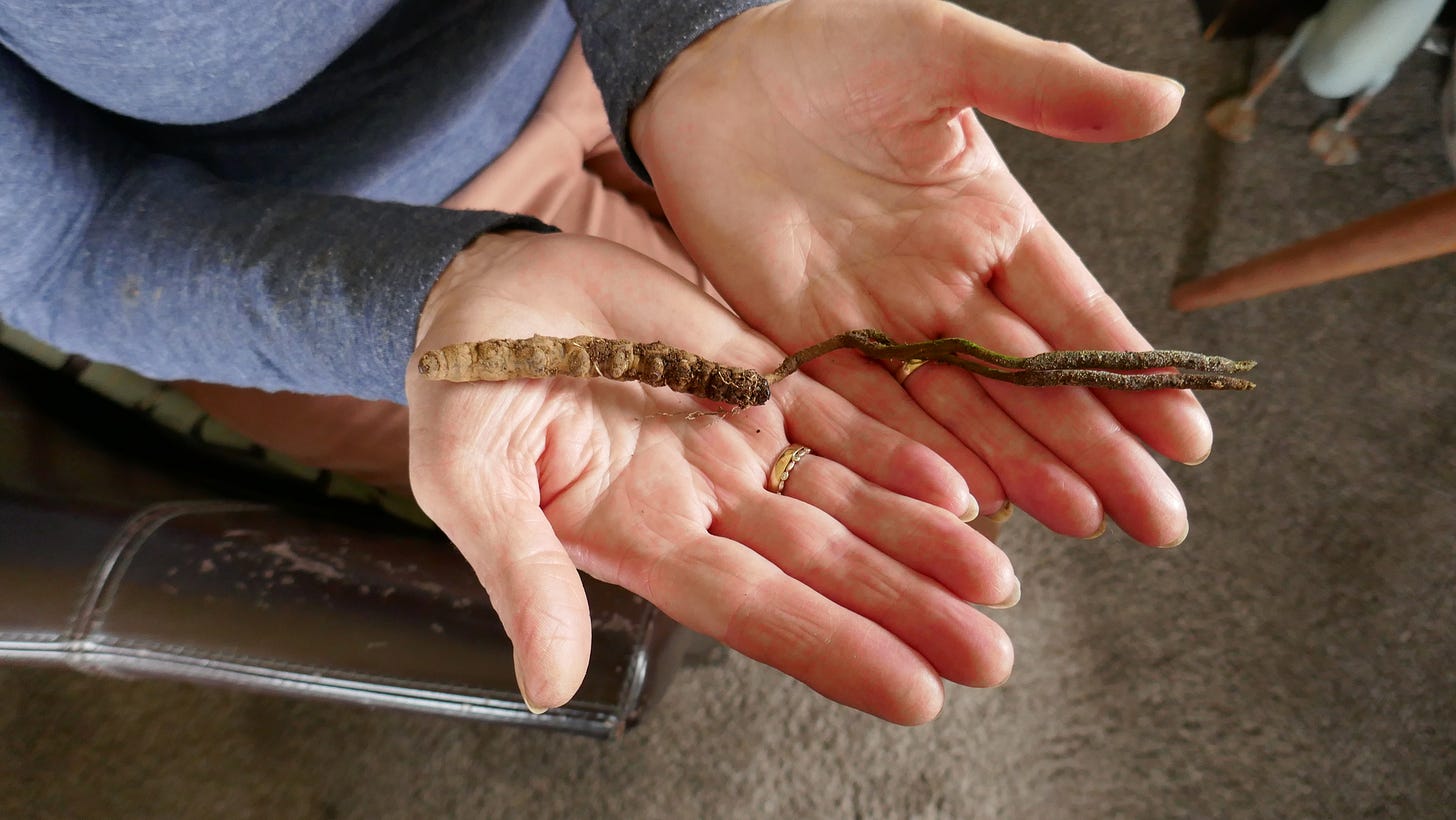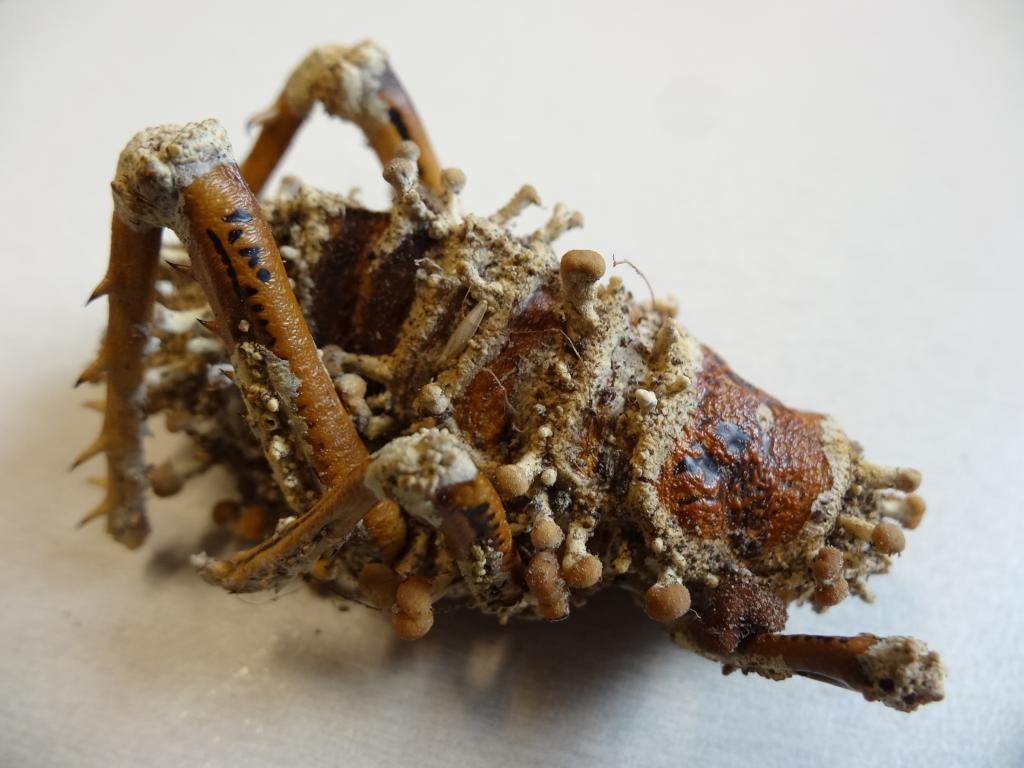Zombie Apocalypse of the Insect World: A Closer Look at Cordyceps
Revisiting entomopathogenic fungus species that have evolved some interesting ways to play with their food.
Note: I wrote a piece about Cordyceps a couple of years ago but had forgotten about it. However, with the recent popularity of The Last of Us series, I decided to revisit the piece and give it a fresh update by including additional finds from my time in Asia (and to dispel any mycophobia regarding a fungus-to-human zombie apocalypse!).
Oct., 2021 - South Island, New Zealand
Every foray offers up some oddity and strange new species I've never encountered before. When scanning the forest floor for mushrooms, the order of operations is typically to look for colorful growths that grab your attention, but an odd shape and striking texture can alert you all the same.
I scan the sides of the trail and find small, white, powdery, cotton-swab-like tufts that sprout out from the soil. I scratch my head in confusion as I find more and more along the way.



Curious, I lightly touch the ends, and white spores instantly powder my fingertips. A small cloud forms, and thousands of particles drift slowly to the moss and soil below as if momentarily suspended in a snow globe. I instinctively hold my breath.
Following what looks like antennae, I pull out my knife to excavate whatever is buried. Carefully removing clods of clay, I uncover a small cicada nymph that has burrowed underground to feed on sap from roots. But it's too late, and another is doing the feeding. A parasitic fungus overtakes its dark maroon shell…
Cordyceps / Isaria sinclairii (Tatarakihi)
The name comes from the Greek word kordyle, meaning "club," and cephali, meaning "head."
The growths protruding from the cicada pupa (tatarakihi) consume and sprout out to more prominent sizes than the host. The antennae stretch upwards and out from the Earth, with the powdery spore-cluster acting as a beacon, ready to spread through the airwaves to make contact and infect other insects.
Cordyceps has a neuro philosophic effect on its victims – in a word, brainwashing. It does this in insects – a bizarre but common capability of many species. Cordyceps can synthesize its host's brain chemistry, hijacking its mind and causing it to do things beneficial to the spread of the fungus.
The fruiting body's filament tapers up to the spore anther – delicate for all its deadliness, brings to mind a slender flower stamen. Some frail new tendril raised overnight by mysterious plant turgor, an alien life with its own secret yearning for light and life and open air.
ISARIA IS THE NAME OF THE ANAMORPH (ASEXUAL REPRODUCTIVE STAGE); THE TELEOMORPH IS CORDYCEPS (THE FRUITING BODY OR SEXUAL REPRODUCTIVE STAGE).
Cordyceps are thought to be teleomorphs of a number of anamorphic, parasitic fungi.
Essentially, the fruit body has many flask-shaped, tightly interwoven hyphae. Inside are sexual spore-bearing cells. These contain thread-like ascospores that break off the fruit body and infect other insects that come into contact.
Thoughts pop into my head of zombie apocalypses and The Last of Us, where an outbreak of mutant Cordyceps fungus ravages the United States, transforming its human hosts into aggressive creatures.
After witnessing the complex shapes borne by the pathogen invading and replacing the host tissue, a morbid curiosity is piqued.
Feb., 2023 - Kuala Lumpur, Malaysia
Ophiocordyceps unilateralis
One species complex, Ophiocordyceps unilateralis, is known for parasitism on ants. It alters the ants' behavior to propagate itself more effectively, killing the ant and then growing its fruiting bodies from the ant's head and releasing its spores.
Parasites commonly manipulate host behavior, and among the most dramatic examples are diverse fungi that cause insects to die attached to leaves. This death-grip behavior functions to place insects in an ideal location for spore dispersal from a dead body following host death.

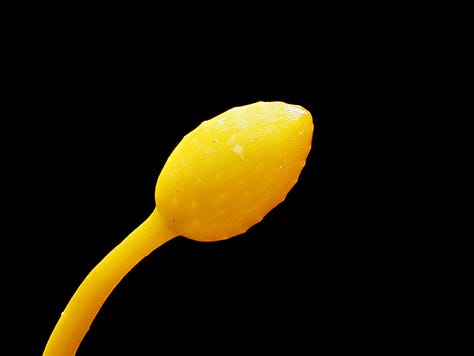

On a foray at Wawasan, I spotted a tiny yellow anther that stuck out from a decaying log. The ant had performed a "death bite" on soggy wood. The image gives an eerie impression that the cordyceps is facing the ant - getting the final say.
Ancient Ophiocordyceps
A 48-million-year-old fossil of an ant in the death grip Ophiocordyceps unilateralis was discovered in Germany.

In a mind-blowing, Our Planet vid, one can witness this parasite taking control.
An ant is possessed, and the fungus uses the host as a vessel. It climbs up a plant away from the nest and performs a final death bite. Tethered to the plant, the parasite fully consumes the ant and sprouts a fruiting body out through the head. Being this high up provides ideal conditions that allow the parasite to distribute spores more effectively.
Tibetan and Chinese Medicine
Despite the morbidness of the fungus, Isaria sinclairii and similar vegetable caterpillar species such as Ophiocordyceps sinensis have been used in traditional Tibetan and Chinese medicine as tonics believed to impart eternal youth. Yartsa gunbu ("summer-grass, winter-worm") has been used for centuries.
Cordyceps have long been used in traditional Chinese medicine to increase energy, treat asthma and improve libido.
It is said that the benefits of Cordyceps consumption were first discovered when herders in the Himalayas observed that yak, goat, and sheep, which had eaten the mushroom, became very strong, stout, and frisky.
The local people then used the fungus to improve the vitality of their cattle, and it was not long before the locals themselves started consuming it. They claimed it had aphrodisiac effects, and it became known as Himalayan Viagra.
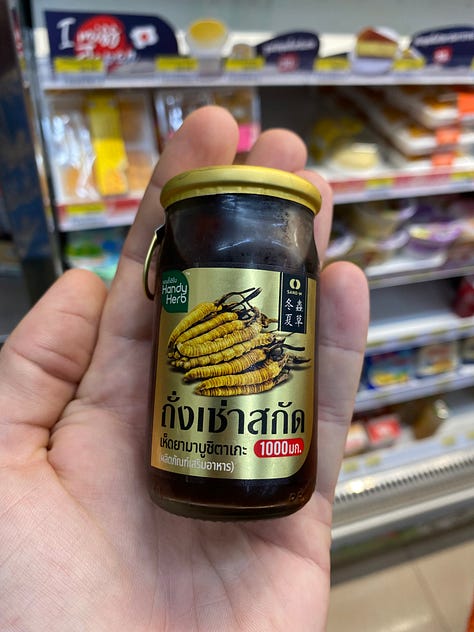
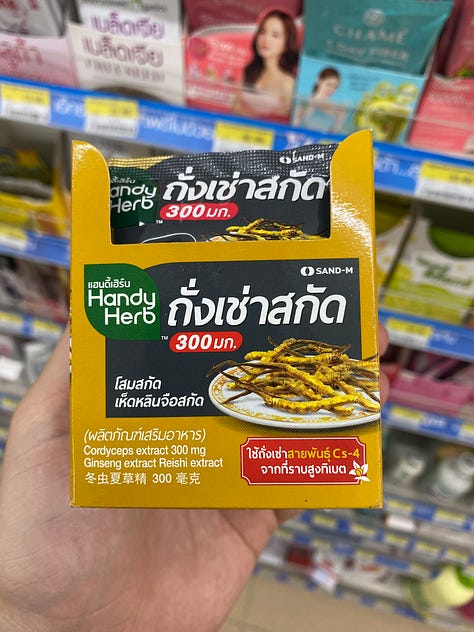



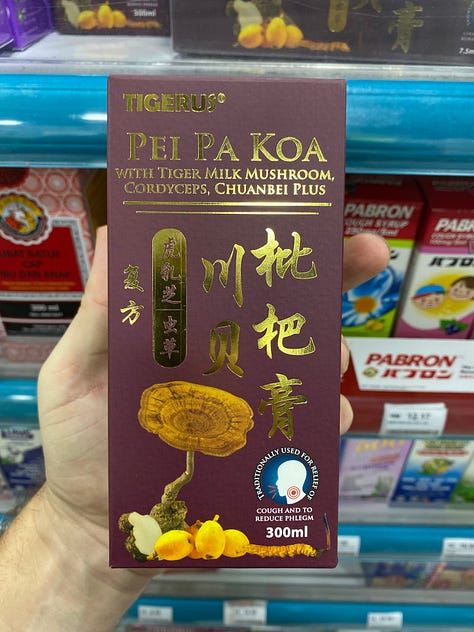
Cordyceps made headlines in 1993 during the Beijing Olympic games when several Chinese runners smashed various world records and attributed their success to eating Cordyceps mushrooms.
This popularization of using the fungus to improve one's health has led to a dramatic fungal commodification of the rural Tibetan economy.
The income from the sale of Cordyceps often accounts for 70%–90% of a family's annual cash income in areas where it grows.
A pound fetches as much as $50,000 and is one of the world’s most expensive fungus.
THERE ARE OVER 600 SPECIES OF CORDYCEPS WORLDWIDE
Medicinal
A sphingolipid derivative produced by I. sinclairii, myriocin, was discovered to have powerful immunosuppressive properties, a function of how the fungus attacks living insects.
Because myriocin is too toxic to use in humans, a synthetic derivative was developed in 1992, named FTY720 or fingolimod. Under its trade name Gilenya, fingolimod was approved by the FDA in 2010 as the first oral drug for treating the autoimmune disease multiple sclerosis.
Fingolimod also shows promise as a cancer medication and has been tested as a possible treatment for obesity.
Another use case is that some Cordyceps species have biochemical and pharmacological properties. Cordycepin is the source of Cyclosporin – an immunosuppressive drug helpful in human organ transplants.
Ophiocordyceps robertsii (Āwheto)
Like the yartsu gunbu of the Tibetan plains, indigenous Maori have a long history of using āwheto, also known as the vegetable caterpillar (Ophiocordyceps robertsii), for traditional tā moko (tattooing).
Maori ancestors discovered where āwheto were and collected many to get the black color required to make ink. When burnt, the āwheto turns black and can be ground up into a powder and mixed with mahoe berries, bird fat, various gums, and oils.
Recent studies have shown O. robertsii to contain antiseptic chemicals that prevent infection, so it would make sense to use it with tā moko.
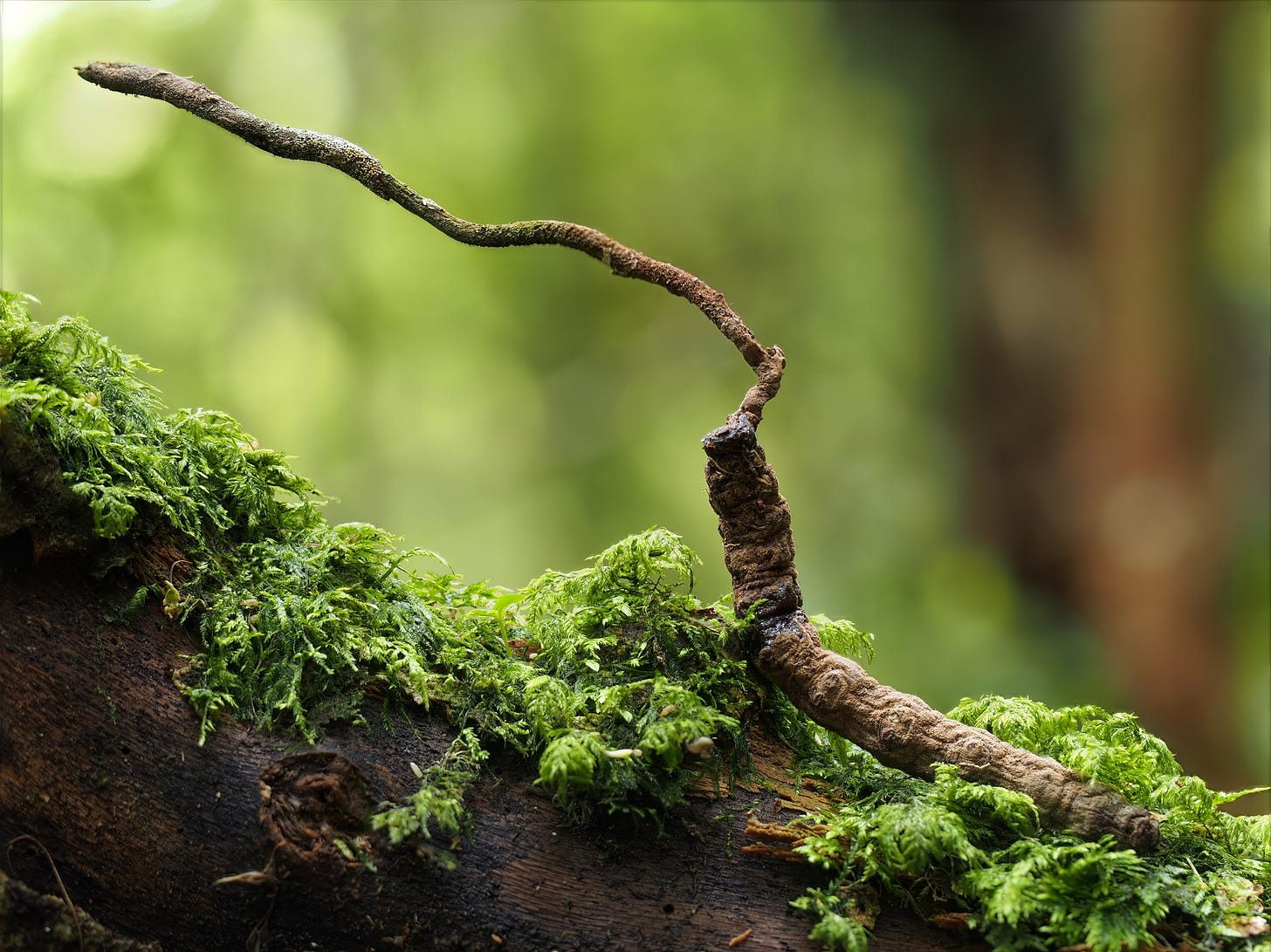
Traditionally, Māori looked for the vegetable caterpillar fungus and sometimes used it for food. When fresh, it has a nutty taste.
One evening, I was scrolling through iNaturalist, and a user uploaded O. robertsii found on his property out on Portobello Peninsula in Dunedin.
Excited, I shot him a message and met up the next day to go on a foray.
"I hope it's not too weird that I ask to come out and view your parasitized caterpillar!" I tell him.
After explaining the importance of the fungus, how it's been on my bucket list for a while, and that finding such a thing, especially in the Otago region this far south, is a very rare occurrence, he led the way.
We reached the top of a hill and came upon small twig-like stroma popping up from the underbrush. To the untrained eye, they camouflage very well into the understory. To have the sense to excavate is instinctual, and I dug one out to examine further.
To finally bear witness to such an extraordinary fungus is a top mushroom-hunting moment of mine.
Beauveria / Icing Sugar Fungus
Being distinctly different from the typical Cordyceps structure, another parasitic fungus is Beauveria. The insects that fall prey to this fungus have white patches or bands that erupt through softer chinks in their body plates.
Etymology
First described in 1835 by Italian entomologist Agostino Bassi while studying the muscardine disease in silkworms. The fungus is named in honor of both Bassi and French mycologist Jean Beauverie, with "Beauveria" acknowledging Beauverie and "bassiana" honoring Bassi.
Agostino Bassi studied mal de segno, a lethal disease affecting silkworms.
He identified the cause of the disease as a contagious living organism after 25 years of research.
His recommendations saved the silk industry, including using disinfectants, isolating and destroying infected caterpillars, and keeping the farms clean.
Bassi's theory that pathogenic organisms caused diseases in plants, animals, and humans preceded the work of Louis Pasteur and Robert Koch.
He also wrote about the culture of potatoes, cheese, wine making, leprosy, and cholera.
His work greatly influenced Pasteur.

Uses
Today, this fungus is widely used as a biological control agent in integrated pest management programs as an eco-friendly alternative to chemical pesticides.
I have found myriad insects infected with Beauveria: beetles, weevils, wasps, and moths. Mantids, stick insects, vegetable bugs, and sometimes spiders.
Once you spot a certain kind of fungi, you'll become more aware of them while out in the bush. I tend to find Beauveria bassiana, or as Kiwi mycologist, Marie Taylor commonly called it, "sugar bonbon disease," infecting insects hiding under soil or near spider webs in crevices off the side of the track.
There are useful, practical applications for Beauveria bassiana.
This includes bio-insecticides to be used against bed bugs. 100% of the bed bugs are eliminated within five days when exposed to cotton fabric sprayed with fungus spores.
Malaria-carrying mosquitos are also controlled when B. bassiana is applied to mosquito nets in a wettable powder form.
No matter the size, even the smallest micro-organisms serve a purpose within the ecosystem and are essential in regulating the ecological balance of nature.
Another Cordyceps species worth mentioning has been on my radar. Most recently featured on RNZ's Critter of the Week, Cordyceps kirkii. This species of Cordyceps infects Giant Weta. It is rare and has only been recorded a handful of times, the first being in 1922.
Cordyceps is a fascinating and diverse genus of fungi that has captured the interest of scientists and enthusiasts alike. From the infamous zombie ant phenomenon to the potential health benefits of Cordyceps supplements, there is much to learn and explore.
While the research is ongoing, early findings suggest that Cordyceps may have promising therapeutic applications in cancer treatment, anti-aging, and immune support. With more research and investigation, we may unlock even more secrets of this mysterious and intriguing fungus.
References:







